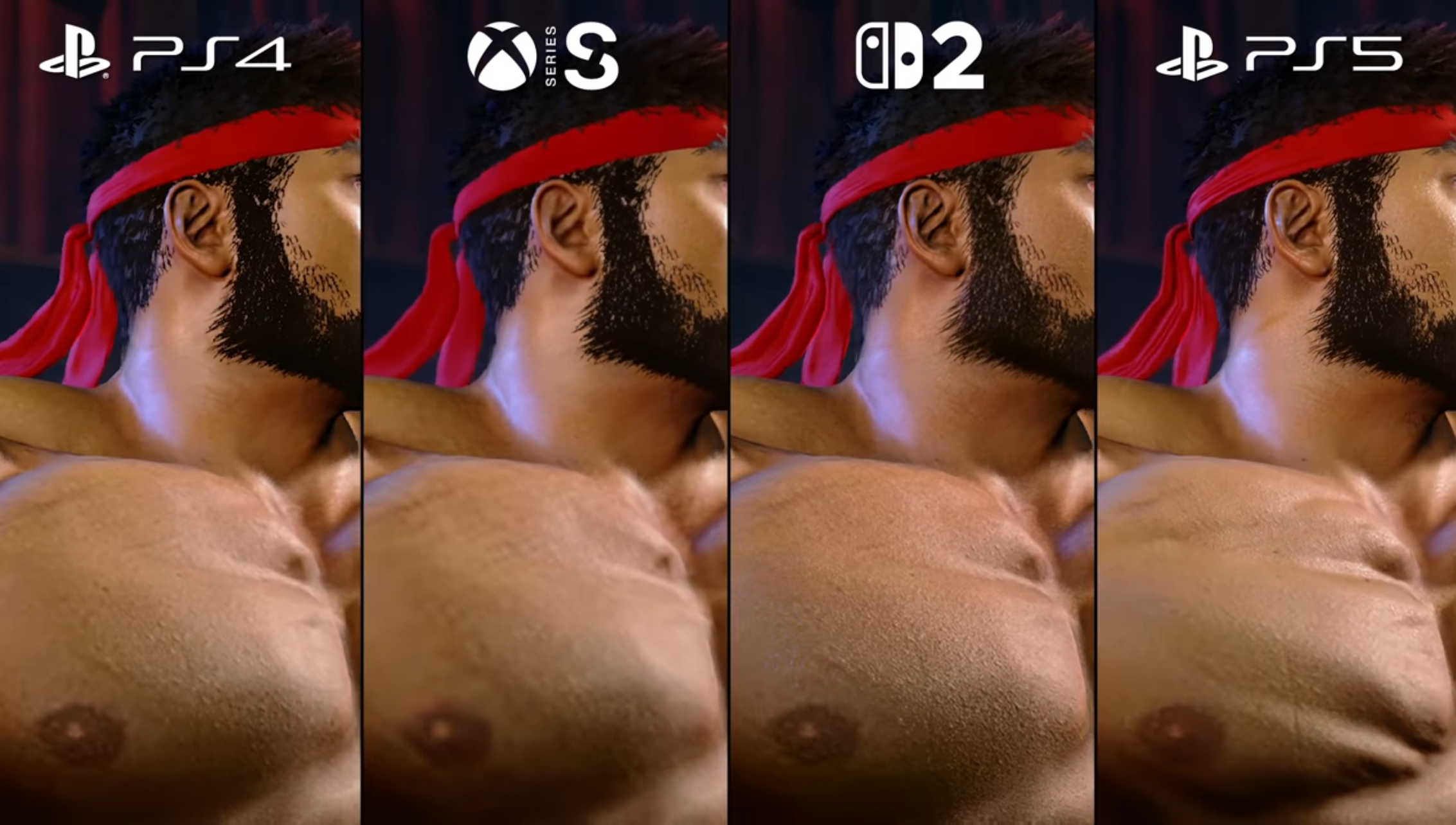Zuzu
Gold Member
General Summary
Resolution Breakdown
- Docked Mode: Renders internally at 960×540, then upscaled to 1080p using DLSS (Deep Learning Super Sampling).
- Portable Mode: Renders at 720×405, upscaled to 720p.
- DLSS implementation is surprisingly effective, producing a clean image with minimal artifacts, even outperforming some native rendering solutions on Xbox Series S.
Visual Trade-Offs
- Texture quality is reduced compared to PS5/Series X, especially in background elements.
- Lighting and shadows are simplified, with fewer dynamic effects.
- Crowd animations and stage details are pared back, but the core visual identity remains intact.
Performance & Frame Rate
| Mode | Frame Rate | Notes |
|---|---|---|
| Fighting Ground (1v1) | 60fps locked | Docked & handheld; no drops |
| Pre-Fight Sequences | ~45fps | Brief dips; no gameplay impact |
| World Tour (explore) | 30–60fps (unlocked) | Variable; depends on scene complexity |
| World Tour (battles) | 30fps capped | Side-on fights only |
| Portable Mode | 60fps locked | Same as docked; lower resolution |
Input Latency
- Input delay is comparable to PS4 Pro with Input Delay Reduction (IDR) enabled.
- Slightly higher latency than PS5/Series X, but within acceptable limits for competitive play.
Gameplay Integrity
- All gameplay mechanics, animations, and hitboxes are preserved.
- Cross-play works seamlessly with other platforms.
- World Tour mode is included but runs at a lower frame rate and resolution, making it the least optimal mode on Switch 2.
Image Quality vs. Other Platforms
| Feature | Switch 2 (Docked) | Xbox Series S | PS5 / Series X |
|---|---|---|---|
| Resolution | 960×540 → 1080p (DLSS) | 1080p native | 4K native |
| Frame Rate | 60fps locked (1v1) | 60fps locked (1v1) | 60fps locked (1v1) |
| Input Latency | ~1 frame higher than PS5 | Slightly better | Best-in-class |
| Visual Effects | Simplified | Moderate | Full fidelity |
| Tournament Legal |
More Detailed Comparison between Switch 2 and Series S
Performance & Frame Rate
| Feature | Switch 2 | Xbox Series S |
|---|---|---|
| Frame Rate | Locked 60fps in 1v1 matches, but 30fps or 30-60fps in other modes | Locked 60fps in 1v1 matches and mostly 60fps in other modes |
| Dynamic Resolution | ||
| Upscaling | ||
| Input Latency | Slightly higher than Series S | Lower latency overall |
- Switch 2 uses DLSS to upscale from a lower base resolution (960×540), but the result is surprisingly clean and stable.
- Series S renders at native 1080p but uses a less effective upscaler, which can introduce more aliasing and flicker.
- Series S delivers mostly 60fps in the various World Tour modes whereas Switch 2 is capped at 30fps in World Tour (battles) and a dynamic 30-60fps in World Tour (explore).
Visual Quality
| Visual Element | Switch 2 | Xbox Series S |
|---|---|---|
| Texture Quality | Lower, but clean with DLSS | Higher, but buggy in some builds |
| Lighting & Effects | Simplified but consistent | More dynamic lighting |
| Hair & Material Detail | Less dithering, cleaner edges | More dithering and noise |
| Background Detail | More stable in motion | Occasional breakup in fast scenes |
- In scenes like Tian Hong Yuan, Switch 2 resolves distant detail more cleanly, thanks to DLSS's superior handling of noise and flicker.
- Series S has higher native texture quality, but some builds suffer from texture bugs that Capcom hasn't patched.
Verdict
Despite running on a mobile chipset, the Switch 2 version of Street Fighter 6 holds its own—and in some areas, even surpasses the Series S:- Image quality is often better on Switch 2 due to DLSS, especially in motion.
- Performance is rock-solid, with no dynamic resolution scaling or frame drops.
- Series S still has the edge in raw texture fidelity and lighting complexity, but its upscaling and occasional bugs hold it back.
Last edited:




